Once you plant a garden, you stop rooting for Bugs Bunny and begin to understand why Elmer Fudd was out to get him. Rabbits (Leporidae) are garden pests. They are herbivores that have voracious appetites for a variety of garden plants. Rabbits are natural burrowers, and their digging behavior can disrupt the soil in gardens. They create burrows and tunnels, which can damage plant roots and destabilize the ground. They cause damage by nibbling on leaves, stems, flower buds, flowers, and vegetables. This behavior can lead to stunted growth, reduced yields, and even death for your plants. So, how do you keep these adorable but destructive critters out of your yard? Keep reading to discover 11 plants that repel and keep rabbits out of your yard.
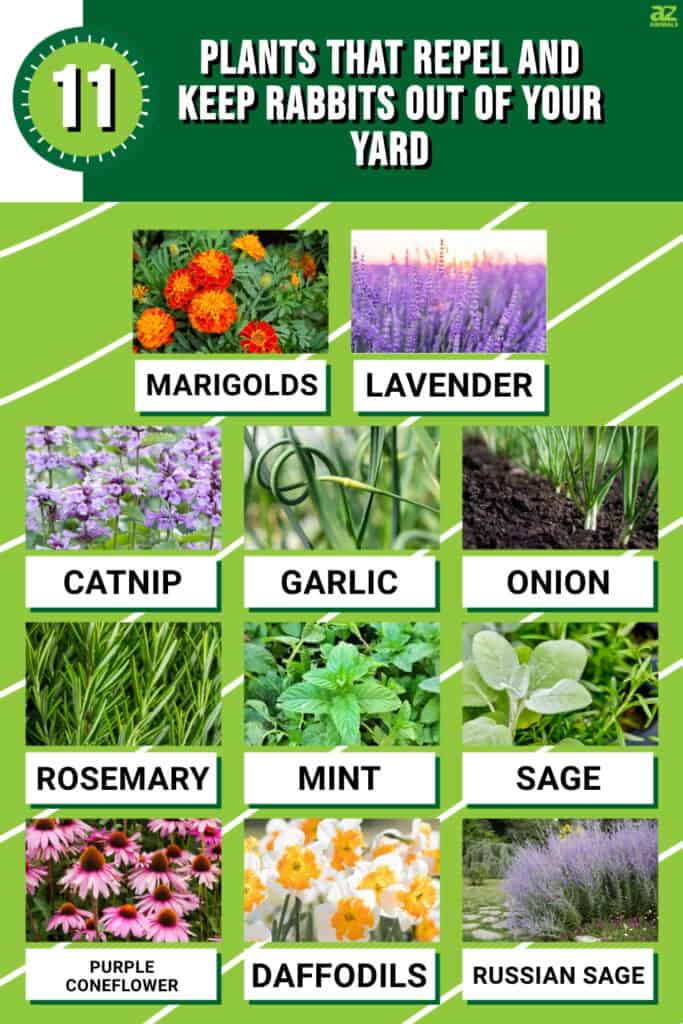
Rabbits
There are 15 separate species of rabbits that call North America home. The majority are cottontails (Sylvilagus). Rabbits have open-rooted, or continuously growing teeth. They often gnaw on tree bark and woody plants. This can cause significant damage or even kill young trees and shrubs. Rabbits are prolific breeders, with the ability to reproduce rapidly. A single pair of rabbits can produce multiple litters in a year, leading to an exponential increase in the rabbit population. As the population grows, the damage they cause to gardens can become more widespread. In urban or suburban areas where natural predators, like foxes or coyotes, are scarce, rabbit populations are left unchecked.

There are 15 separate species of rabbits that call North America home. The majority are cottontails, like this
Eastern cottontail
(
Sylvilagus floridanus).
©Rabbitti/Shutterstock.com
Planting the correct mix of flowers will keep these cute, but hungry, bunnies at bay. Some flowers have scents or properties that rabbits find unappealing. Planting these will discourage rabbits from venturing into your garden. By incorporating a variety of flowers, you can create an environment that is less attractive to rabbits. Let’s consider some of the different flowers that have repellent effects.
Marigolds
The vibrant marigold has a strong scent that rabbits dislike. Planting marigolds (Tagetes) around your garden can help deter rabbits. Marigolds come in a variety of colors from deep russet to bright yellow. They will bloom well into fall as they are frost tolerant.
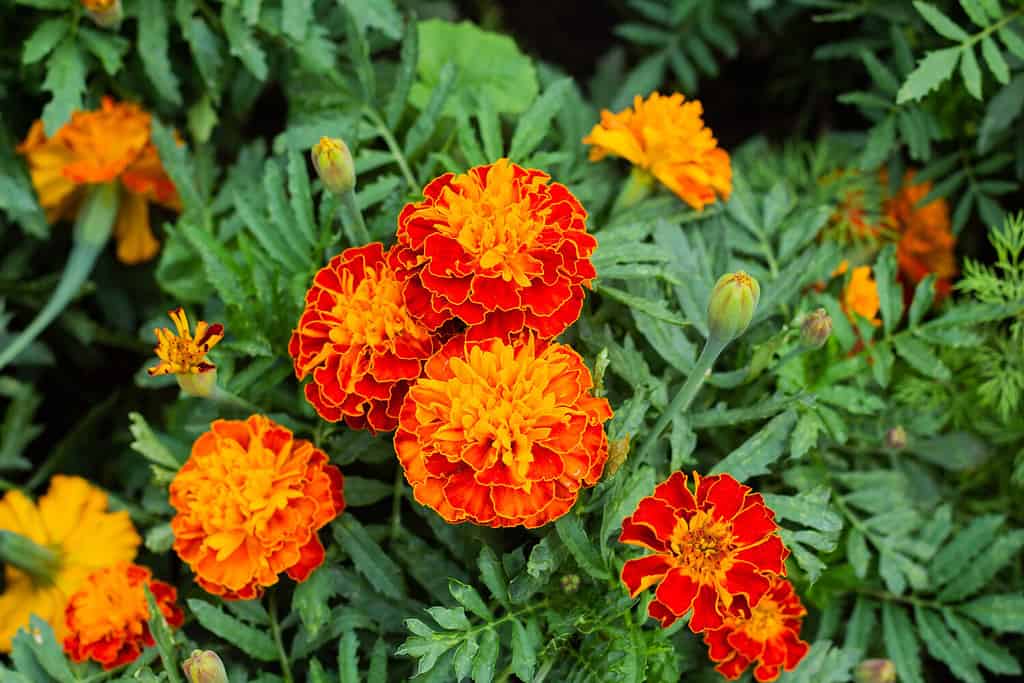
Planting marigolds around your garden can help deter rabbits.
©FunFamilyRu/Shutterstock.com
Lavender
The strong fragrance of lavender (Lavandula) is known to repel rabbits. Its beautiful flowers make it a great addition to any garden. The fragrance of lavender is so strong that it was used in ancient Egypt during the mummification process, while the Greeks discovered its medicinal properties.
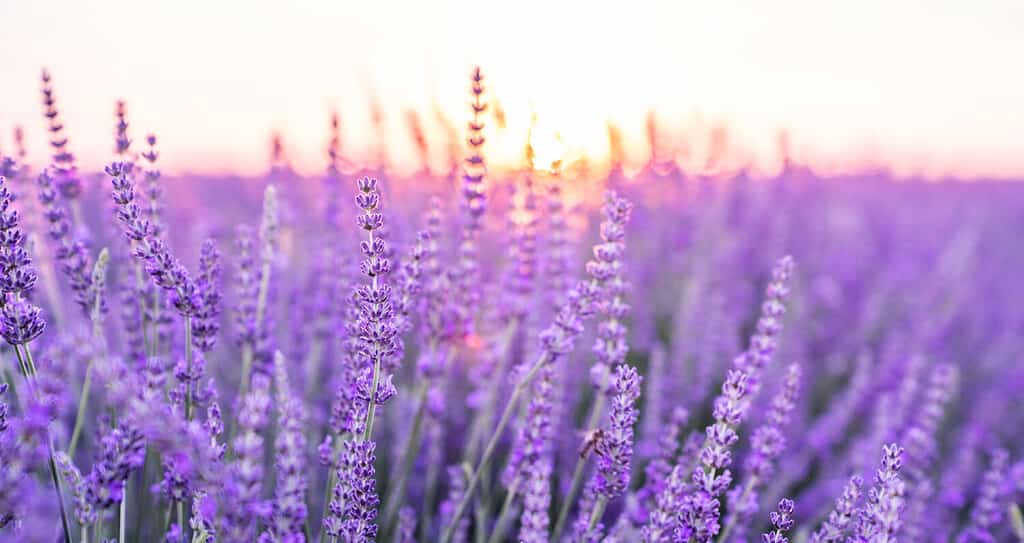
The strong fragrance of lavender is known to repel rabbits
©ESstock/Shutterstock.com
Catnip
While cats are attracted to catnip (Nepeta cataria), rabbits tend to avoid it. Planting catnip can act as a natural deterrent to rabbits. Catnip is also an excellent insect repellent.

While cats are attracted to catnip, rabbits tend to avoid it.
©iStock.com/guppys
Garlic
The pungent odor of garlic (Allium sativum) can be effective in keeping rabbits away. Planting garlic around your garden or using garlic-based sprays can help deter them. While rabbits shy away from garlic, the average American eats two pounds of garlic annually! Not only does garlic keep rabbits at bay, but in popular culture, it is portrayed as keeping vampires from getting too close.

Planting garlic around your garden or using garlic-based sprays can help deter rabbits.
©Mikhail_Nau/Shutterstock.com
Onion
Like garlic, the strong smell of onions (Allium cepa) can repel rabbits. Planting onions in your garden can help protect your plants. The primary varieties of onions are red, white, and yellow. The average American consumes nearly 20 pounds of onions a year! Amino acids that are released when an onion is cut are what irritate the eye and make them tear.
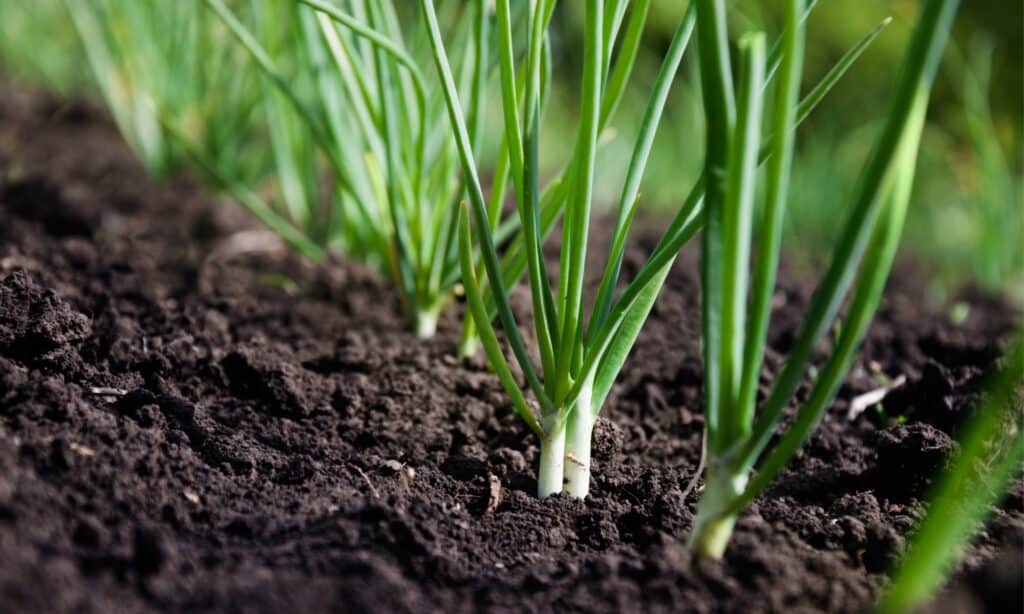
Planting onions in your garden can help protect your plants from rabbits.
©iStock.com/Zoya2222
Rosemary
The aromatic herb rosemary (Rosemarinus officinalis) is not favored by rabbits. Planting rosemary bushes or using rosemary sprays can act as a deterrent. Rosemary also has antiviral properties.
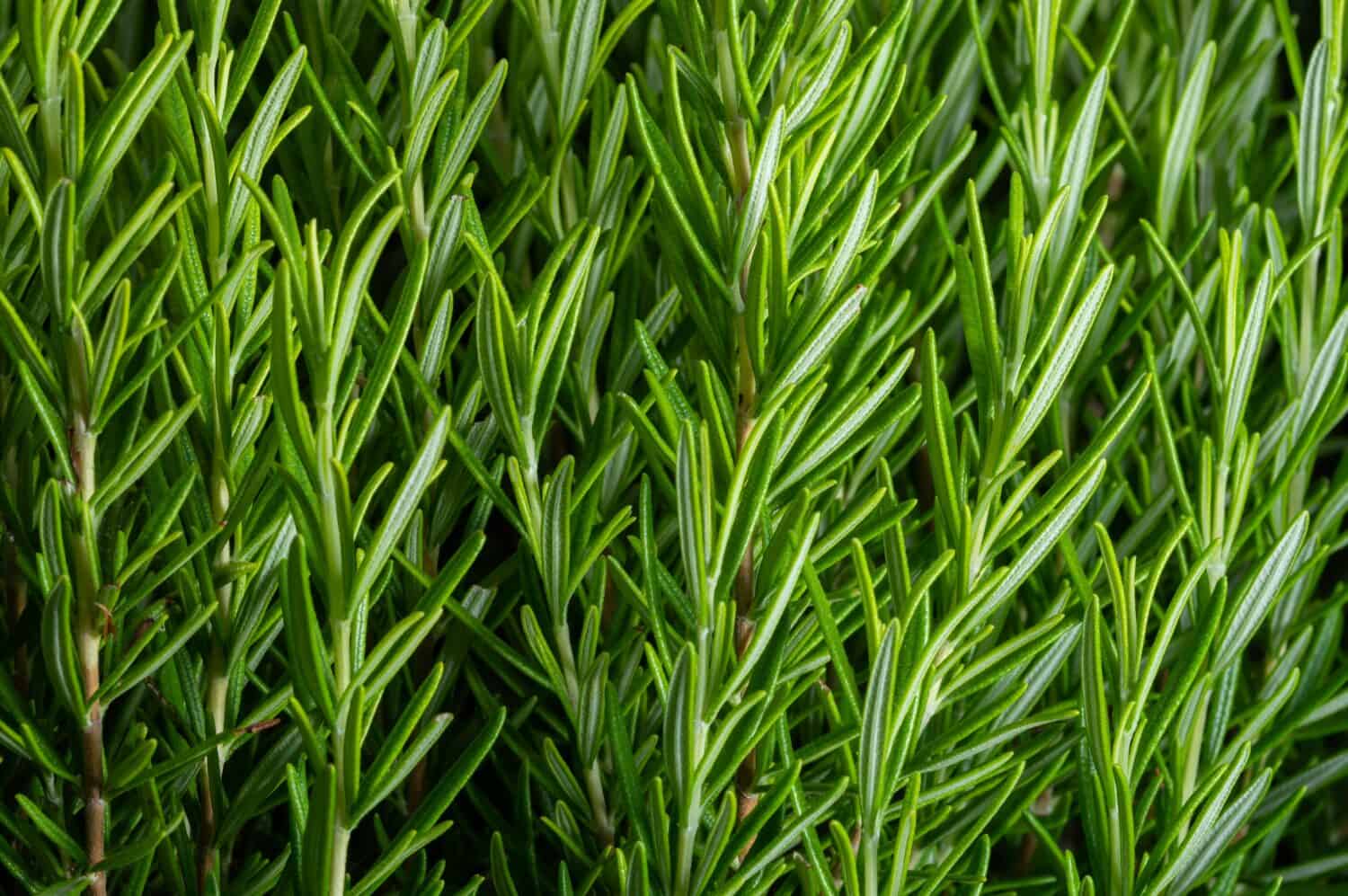
Planting rosemary bushes or using rosemary sprays can act as a deterrent to rabbits.
©Hulya Poyraz/Shutterstock.com
Mint
The strong scent of mint (Lamiaceae) helps keep rabbits away. Planting mint varieties like spearmint or peppermint around your garden can be an effective deterrent to rabbits. There are over 30 varieties of mint. Humans have been using mint for thousands of years for its flavor as well as its scent. Rabbits? Not so much.
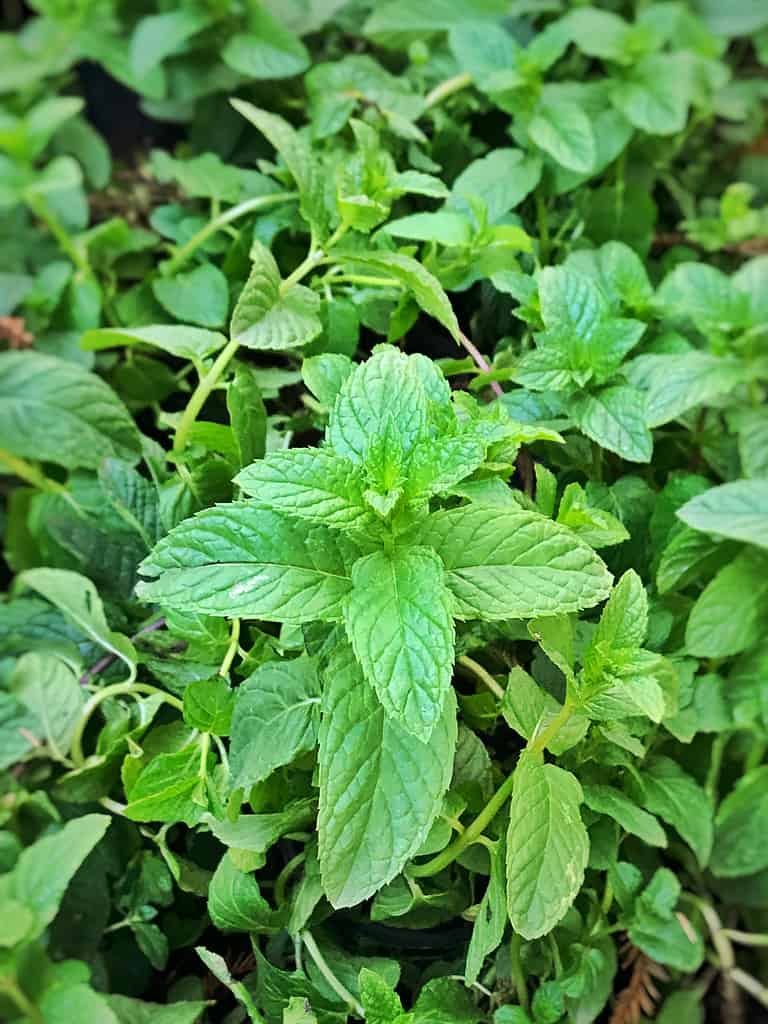
Planting mint varieties like spearmint or peppermint around your garden can be an effective deterrent to rabbits.
©KhaledYousry22/Shutterstock.com
Sage
Rabbits generally avoid plants with a strong herbal scent, and sage (Salvia officinalis) falls into this category. Planting sage can help repel them. Native to the Mediterranean, sage is a deep-rooted plant whose roots can reach 3 feet (1 meter) or more into terra firma.
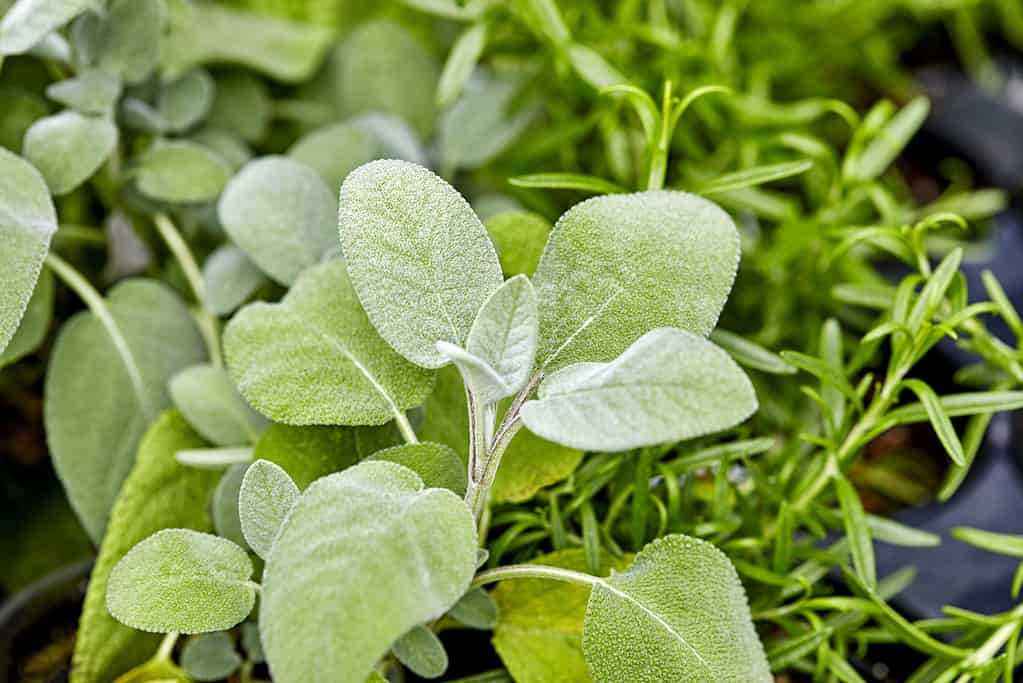
Rabbits generally avoid plants with a strong herbal scent, and sage falls into this category.
©iStock.com/wingedwolf
Purple Coneflower
Rabbits tend to avoid plants with tough or spiky leaves, and the purple coneflower (Echinacea) fits this description. The purple coneflower is native to the Eastern and Central U.S. Its attractive flowers make it a splendid addition to your garden. Not to mention its medicinal properties. Echinacea boosts the immune system.
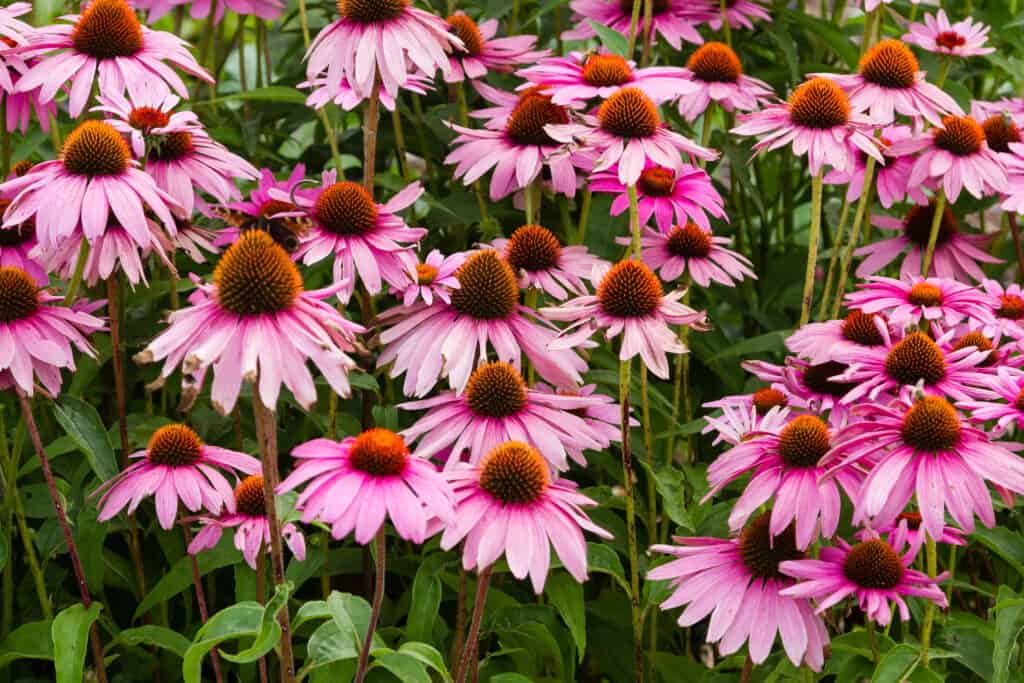
Rabbits tend to avoid plants with tough or spiky leaves, and the purple coneflower (
Echinacea) fits this description.
©Milosz Maslanka/Shutterstock.com
Daffodils
Many spring-blooming bulbs, including daffodils, are unpalatable to rabbits due to their strong scents. Planting daffodils can help deter rabbits from your garden. There are over 25,000 varieties of daffodils. Choosing ones that are known for abundant fragrance, like Narcissus Actaea, work best for keeping rabbits out of your garden.
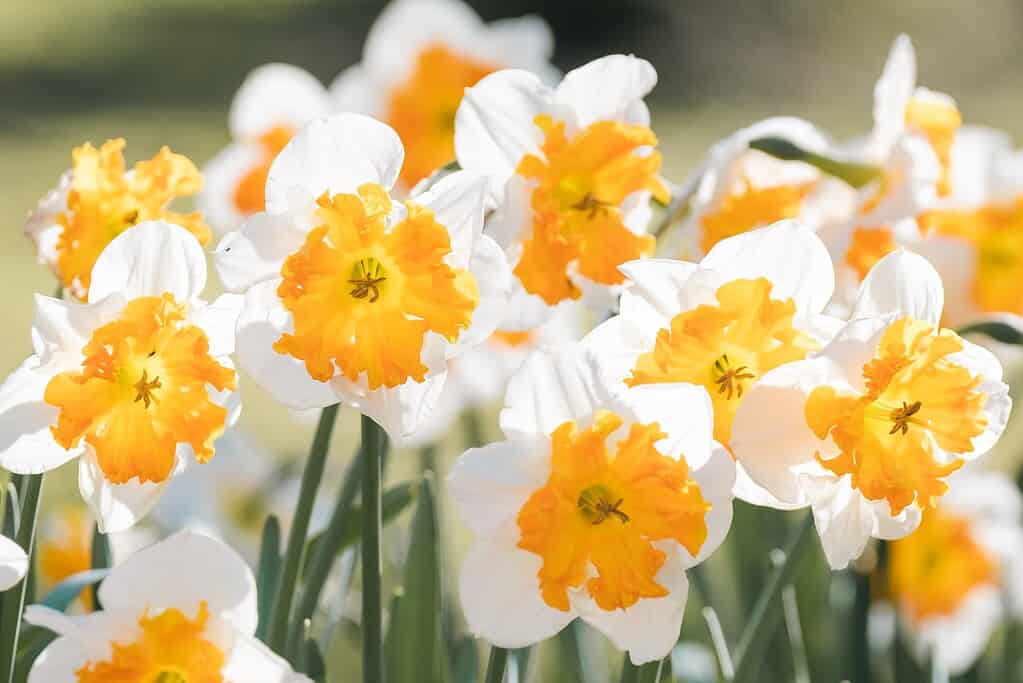
Planting daffodils can help deter rabbits from your garden.
©Jordan Comley/Shutterstock.com
Russian Sage
The strong fragrance of Russian Sage (Salvia yangii; previously Perovskia atriplicifolia) can help deter rabbits from your garden. It can make a statement as a border plant. Russian sage is neither Russian nor sage! Russian sage is native to the steppes of Southwest Asia. Since 2017 It has been classified as salvia.
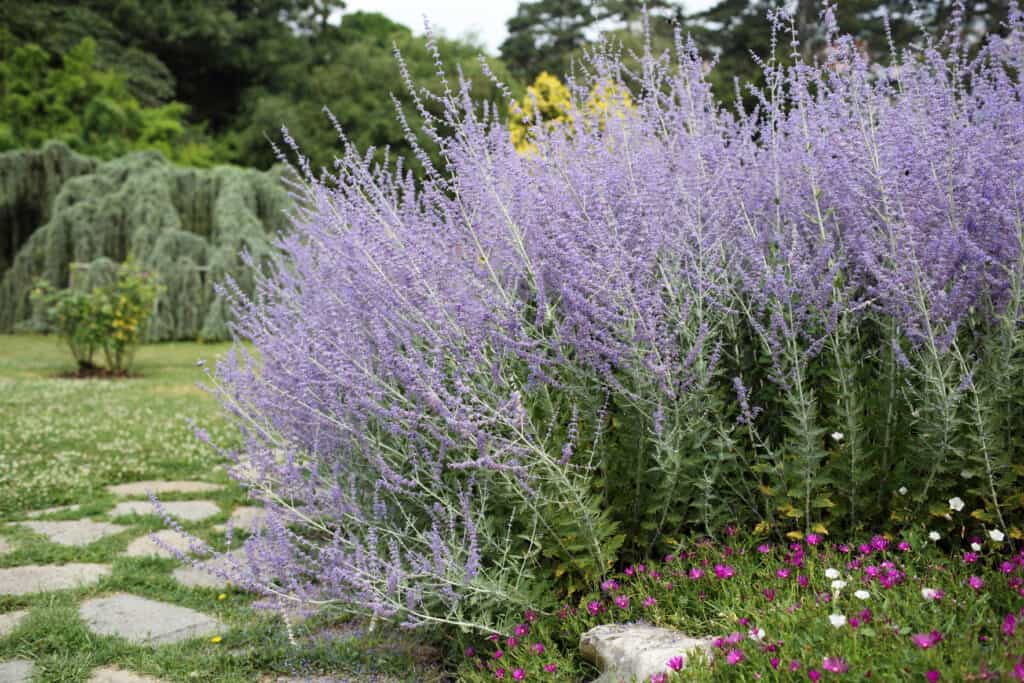
Despite its name, Russian sage is actually salvia and comes from the steppes and hills of Asia.
©iStock.com/loflo69
Physical Barriers
To mitigate the damage caused by rabbits, gardeners often use a fence. When it comes to rabbit-proof fencing, some things to consider are height, depth, material, and design. The fence should be at least 2 to 3 feet (60 to 90 cm) tall to prevent rabbits from easily jumping over it. If you have particularly determined rabbits or larger breeds, a fence height of 3 to 4 feet (90 to 120 centimeters) is recommended.
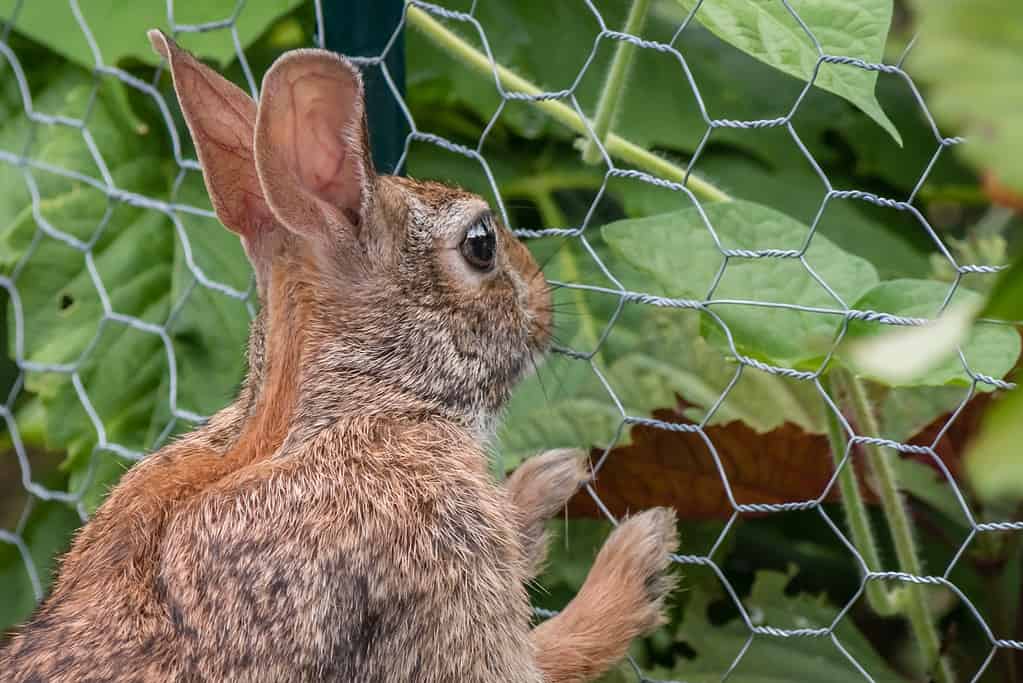
To mitigate the damage caused by rabbits, gardeners often use a fence.
©Jay Gao/Shutterstock.com
To prevent rabbits from burrowing under the fence, it’s recommended to bury the bottom of the fence at least 6 to 12 inches (15 to 30 centimeters) deep. This can be achieved by extending the fence material below the ground or by attaching hardware cloth to the bottom of the fence and burying it. The fence material should be sturdy and have small enough gaps or openings to prevent rabbits from squeezing through. Chicken wire or hardware cloth with openings no larger than 1 inch (2.5 centimeters) is commonly used for rabbit-proof fencing. Angling the top portion of the fence outward at a 30 to 45-degree angle. This makes it more difficult for rabbits to climb over the fence.
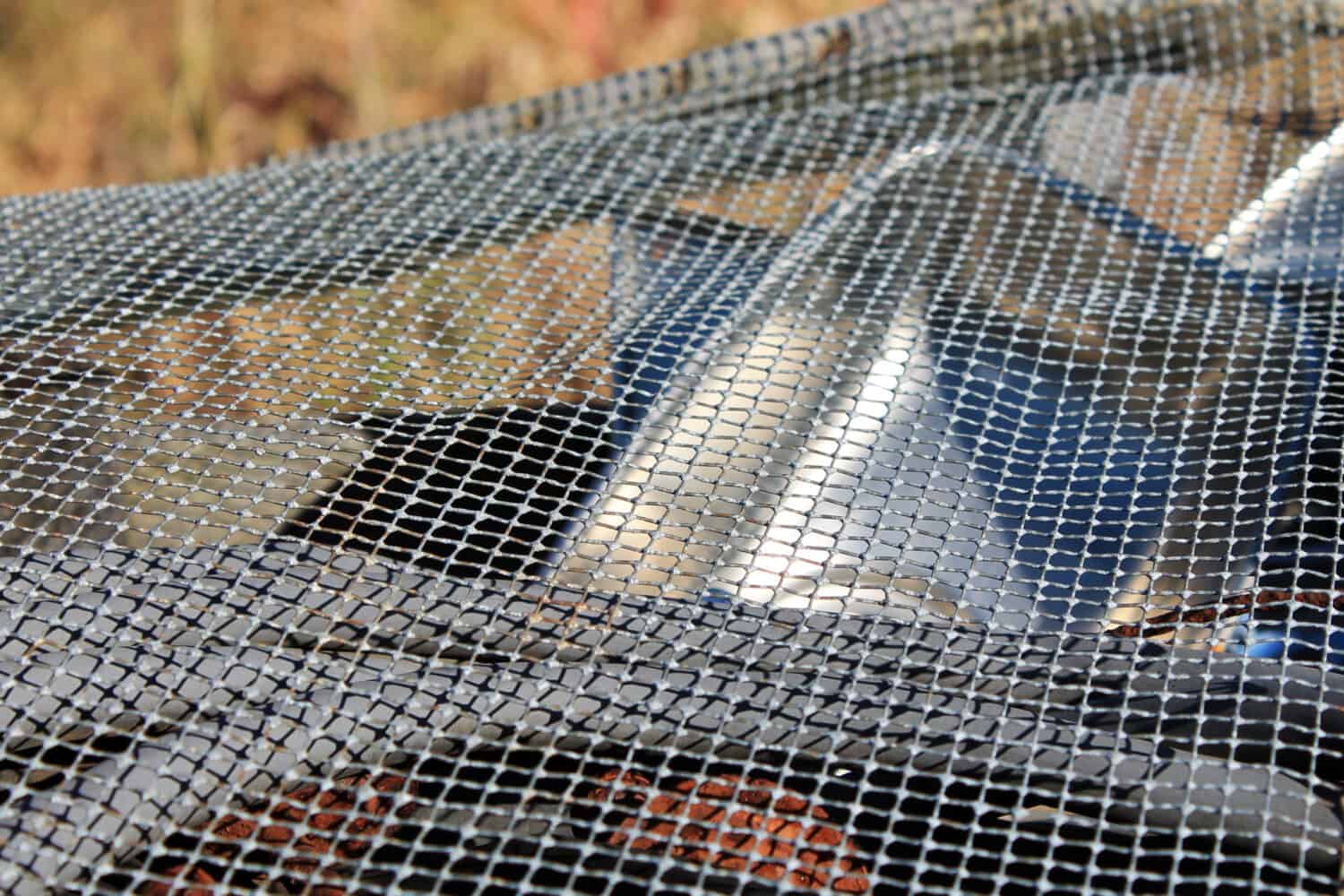
Hardware cloth (pictured) with openings no larger than 1 inch (2.5 centimeters) is commonly used for rabbit-proof fencing.
©John Cumbow/Shutterstock.com
Mind the Gate
Ensure that the gate is also properly secured and has no gaps or openings that rabbits can slip through. Use self-closing or spring-loaded hinges to keep the gate closed at all times. While a well-constructed fence can be highly effective in keeping rabbits out, it should completely enclose the garden area. Any gaps or openings in the fence can provide entry points for rabbits. Regularly inspect the fence for any damage or weak spots that rabbits could exploit. Combining a physical barrier like a fence with other deterrent methods, such as scent-based repellents or companion planting with rabbit-resistant plants, can provide an even stronger defense against those pesky rabbits.
Summary of the 11 Plants That Repel Rabbits
| Plant Name | Type of Plant | Feature of Plant | |
|---|---|---|---|
| 1. | Marigold | Flower | Flower of the dead in Mexico |
| 2. | Lavender | Flower | Used for mummification and medicinal purposes |
| 3. | Catnip | Herb | Repels insects |
| 4. | Garlic | Vegetable | Average American eats 2 pound of garlic each year |
| 5. | Onion | Vegetable | Average American eats 20 pounds of onions each year |
| 6. | Rosemary | Herb | Has antiviral properties |
| 7. | Mint | Herb | Medicinal value for nausea, calming, and sleep |
| 8. | Sage | Evergreen Shrub | Many medicinal uses |
| 9. | Purple Coneflower | Flower | Produces echinacea which boosts immune system |
| 10. | Daffodil | Flower | Symbol of renewal and rebirth |
| 11. | Russian Sage (Salvia) | Herbaceous Perennial and Subshrub | Makes into a medicinal tea for indigestion; breaks a fever |
Thank you for reading! Have some feedback for us? Contact the AZ Animals editorial team.








